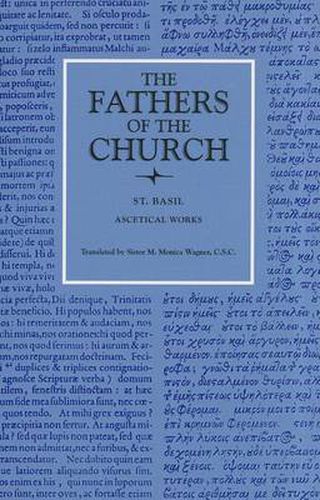Readings Newsletter
Become a Readings Member to make your shopping experience even easier.
Sign in or sign up for free!
You’re not far away from qualifying for FREE standard shipping within Australia
You’ve qualified for FREE standard shipping within Australia
The cart is loading…






His zealous and intrepid defense of the orthodox faith and his contribution to handling the external affairs of the Eastern Church were by no means the whole service to which St. Basil the Great devoted his considerable talents. His life both exemplified and shaped the ascetical movement of his time. After renouncing a brilliant career as rhetorician, he traveled widely, studying the various forms of asceticism practiced in Eastern Christendom. On his return, he retired in the year 358 to a place near Neocaesarea to put into practice the best of what he had seen, and there disciples soon joined him. When his friend Gregory of Nazianzus visited him there in 358, he began to write his Rules and other works that have had great importance in promoting and regulating the common life of monasticism. This life, regulated and freed from excess, as an expression of the law of charity was to be the monk’s path to union with God. Basil’s concept of the monastic ideal, socially directed and moderate without being lax, became the fundamental concept of Greek and Slavonic monasticism, and it influenced St. Benedict in legislating for Western monasticism.
The ascetical writings of St. Basil contained in this volume, addressed to both monks and laymen, are of prime importance for understanding the role their author played in the Church of the fourth century and, through his influence, still plays today.
$9.00 standard shipping within Australia
FREE standard shipping within Australia for orders over $100.00
Express & International shipping calculated at checkout
His zealous and intrepid defense of the orthodox faith and his contribution to handling the external affairs of the Eastern Church were by no means the whole service to which St. Basil the Great devoted his considerable talents. His life both exemplified and shaped the ascetical movement of his time. After renouncing a brilliant career as rhetorician, he traveled widely, studying the various forms of asceticism practiced in Eastern Christendom. On his return, he retired in the year 358 to a place near Neocaesarea to put into practice the best of what he had seen, and there disciples soon joined him. When his friend Gregory of Nazianzus visited him there in 358, he began to write his Rules and other works that have had great importance in promoting and regulating the common life of monasticism. This life, regulated and freed from excess, as an expression of the law of charity was to be the monk’s path to union with God. Basil’s concept of the monastic ideal, socially directed and moderate without being lax, became the fundamental concept of Greek and Slavonic monasticism, and it influenced St. Benedict in legislating for Western monasticism.
The ascetical writings of St. Basil contained in this volume, addressed to both monks and laymen, are of prime importance for understanding the role their author played in the Church of the fourth century and, through his influence, still plays today.